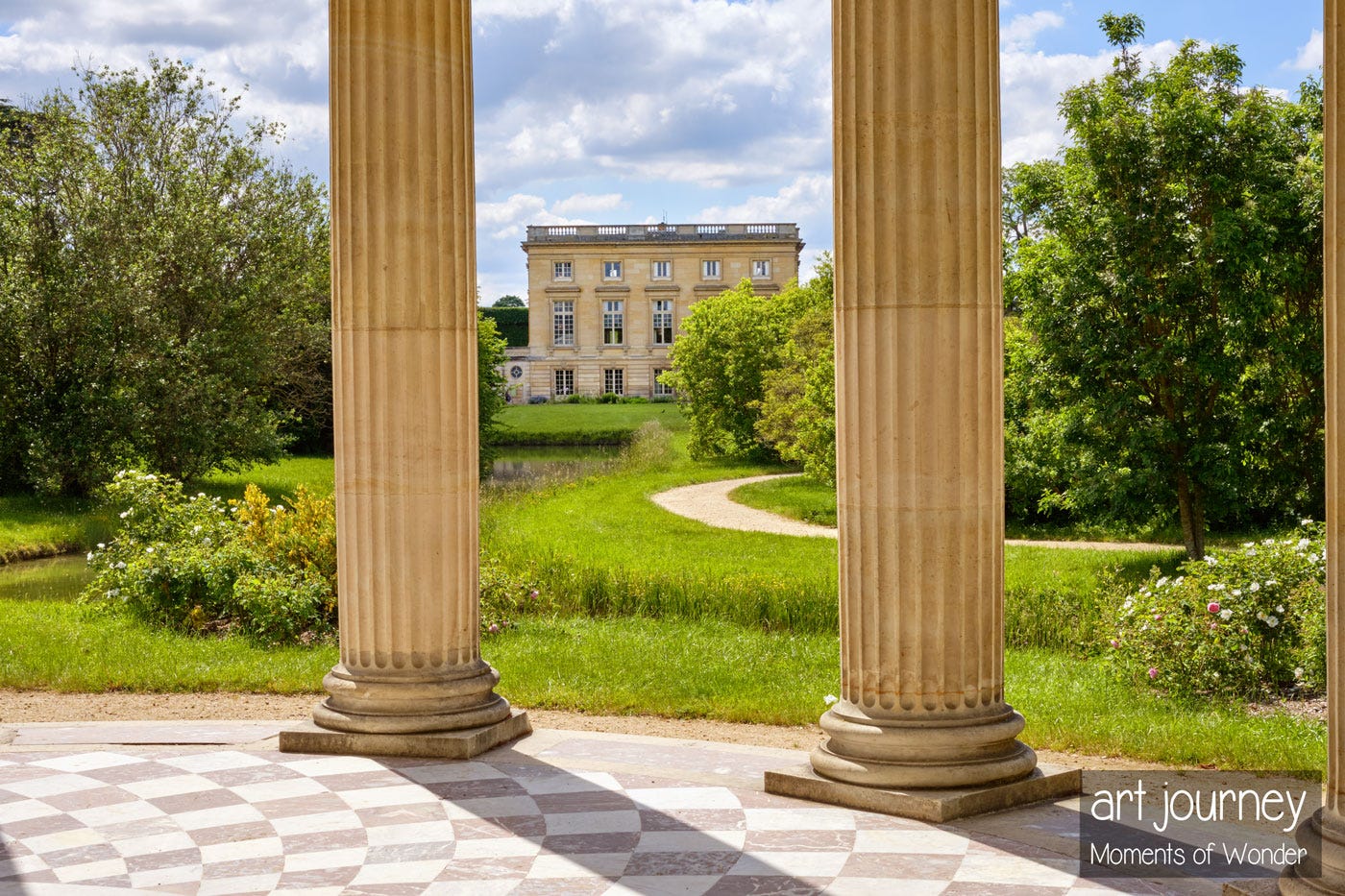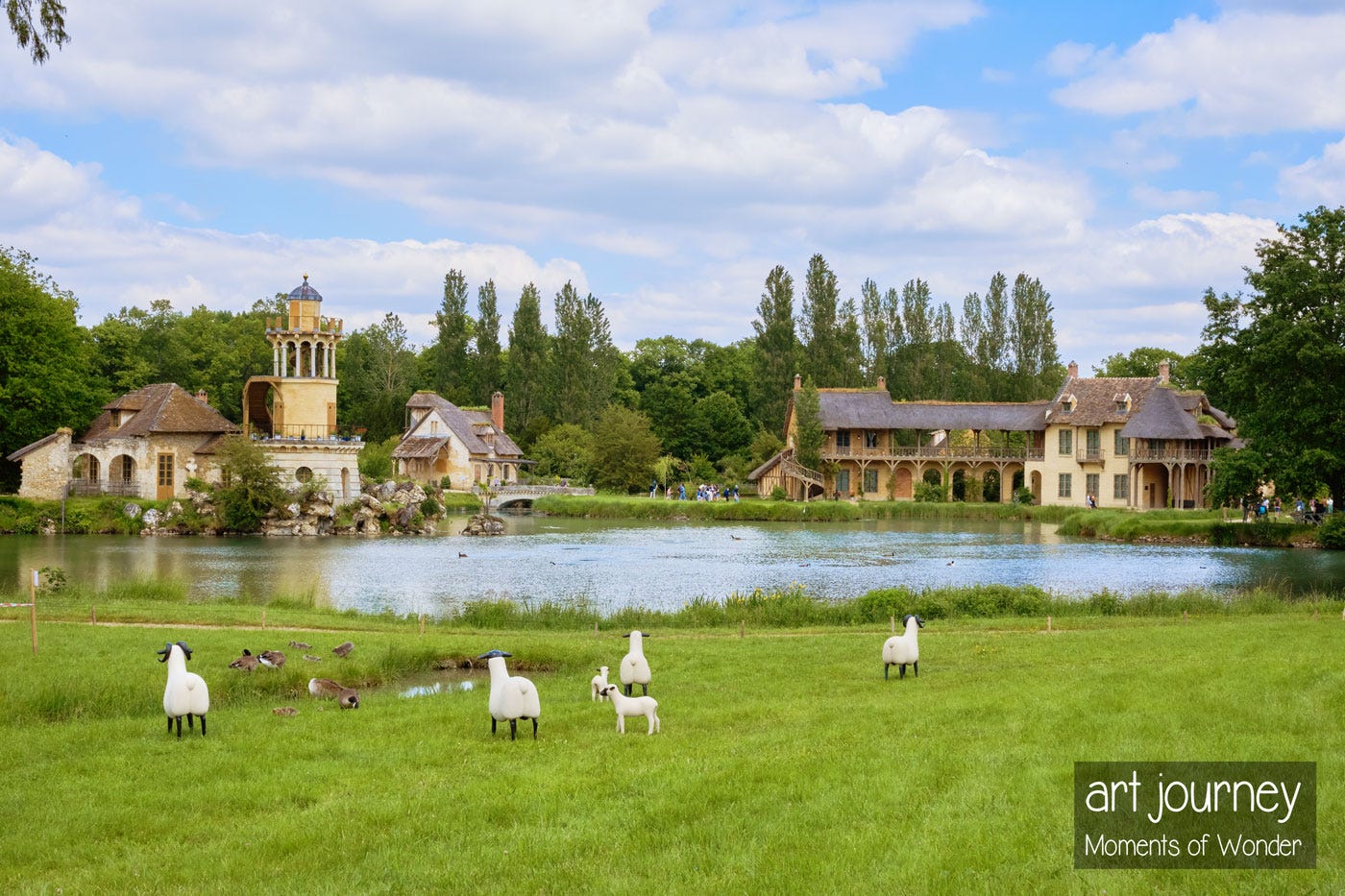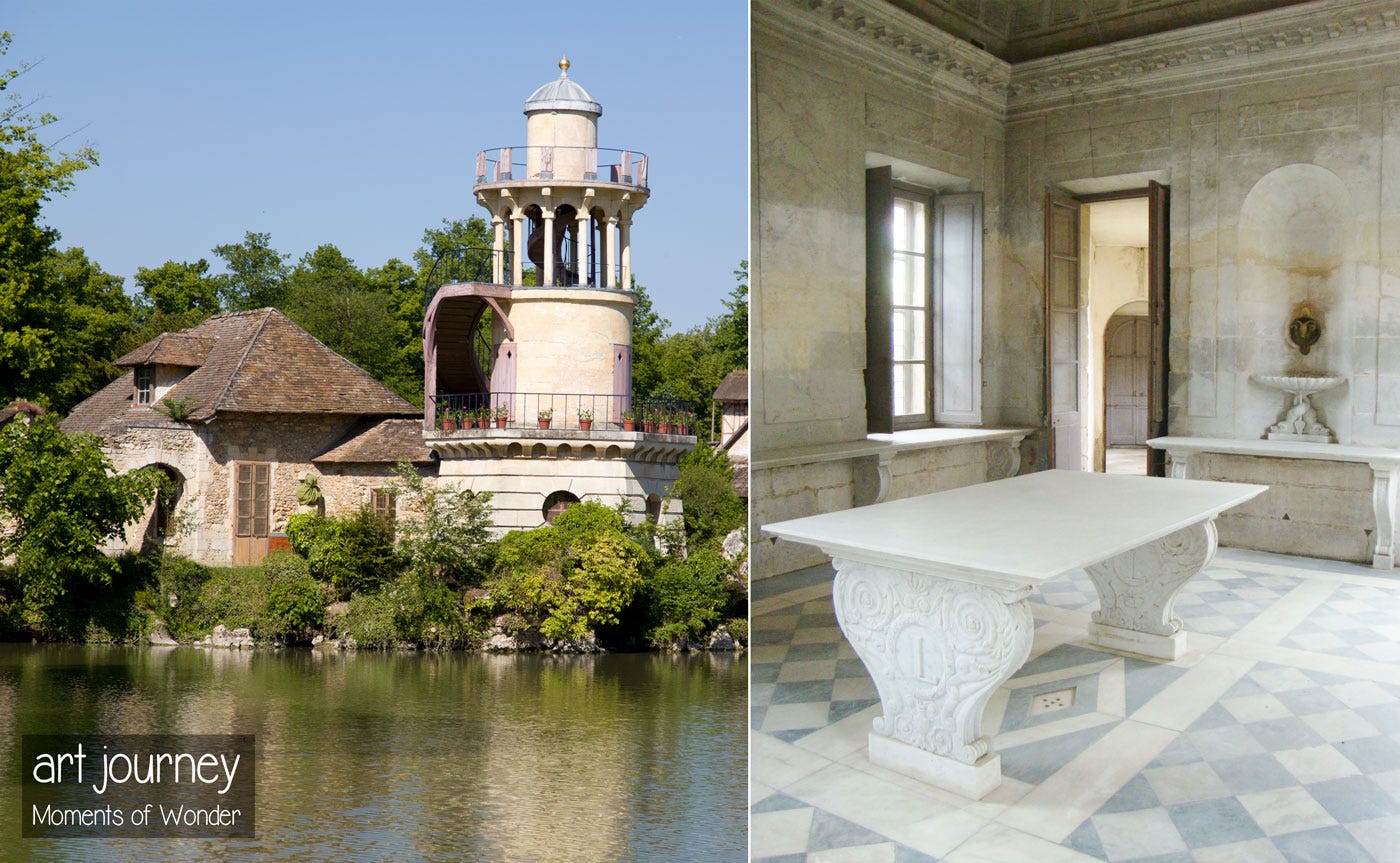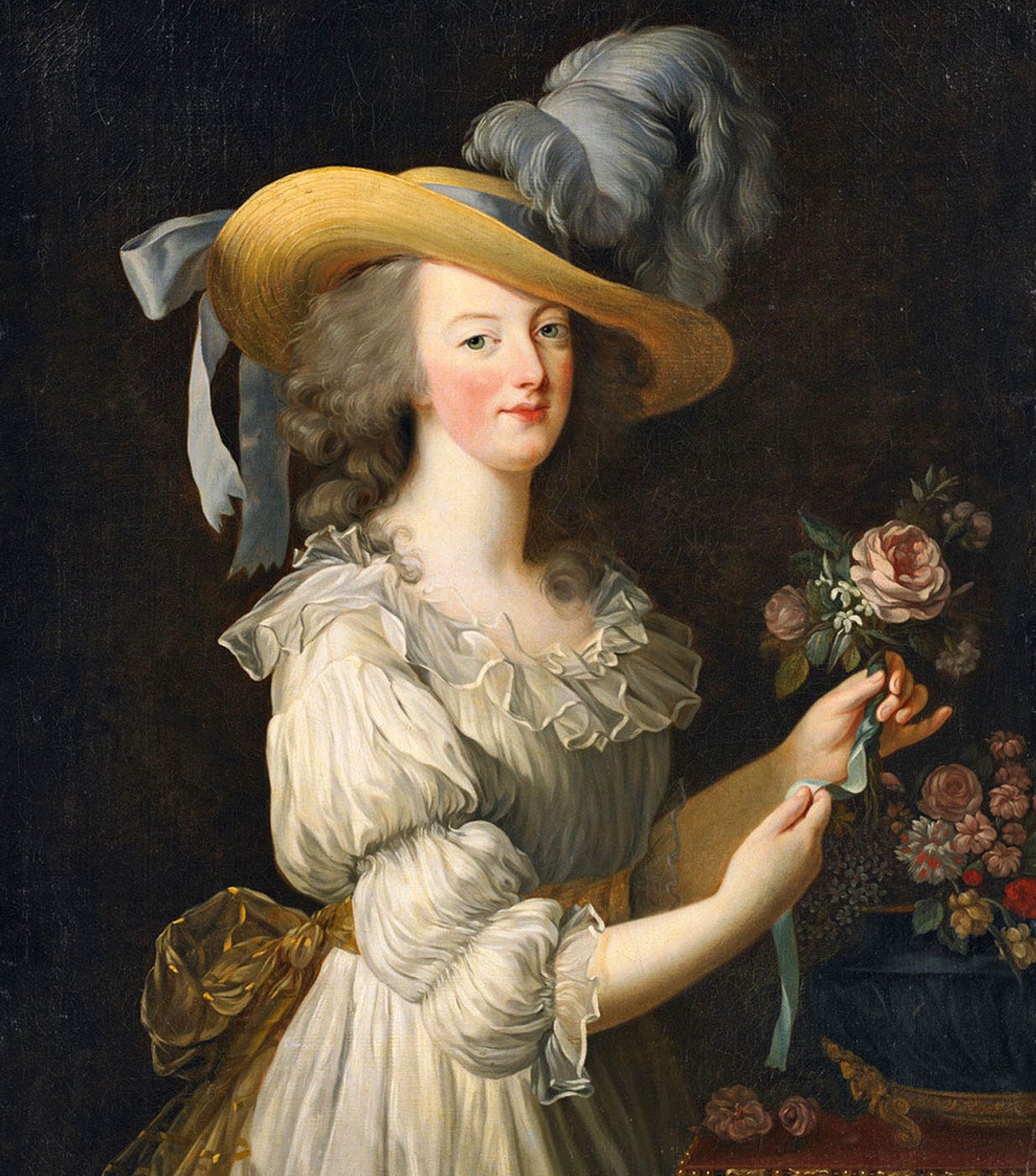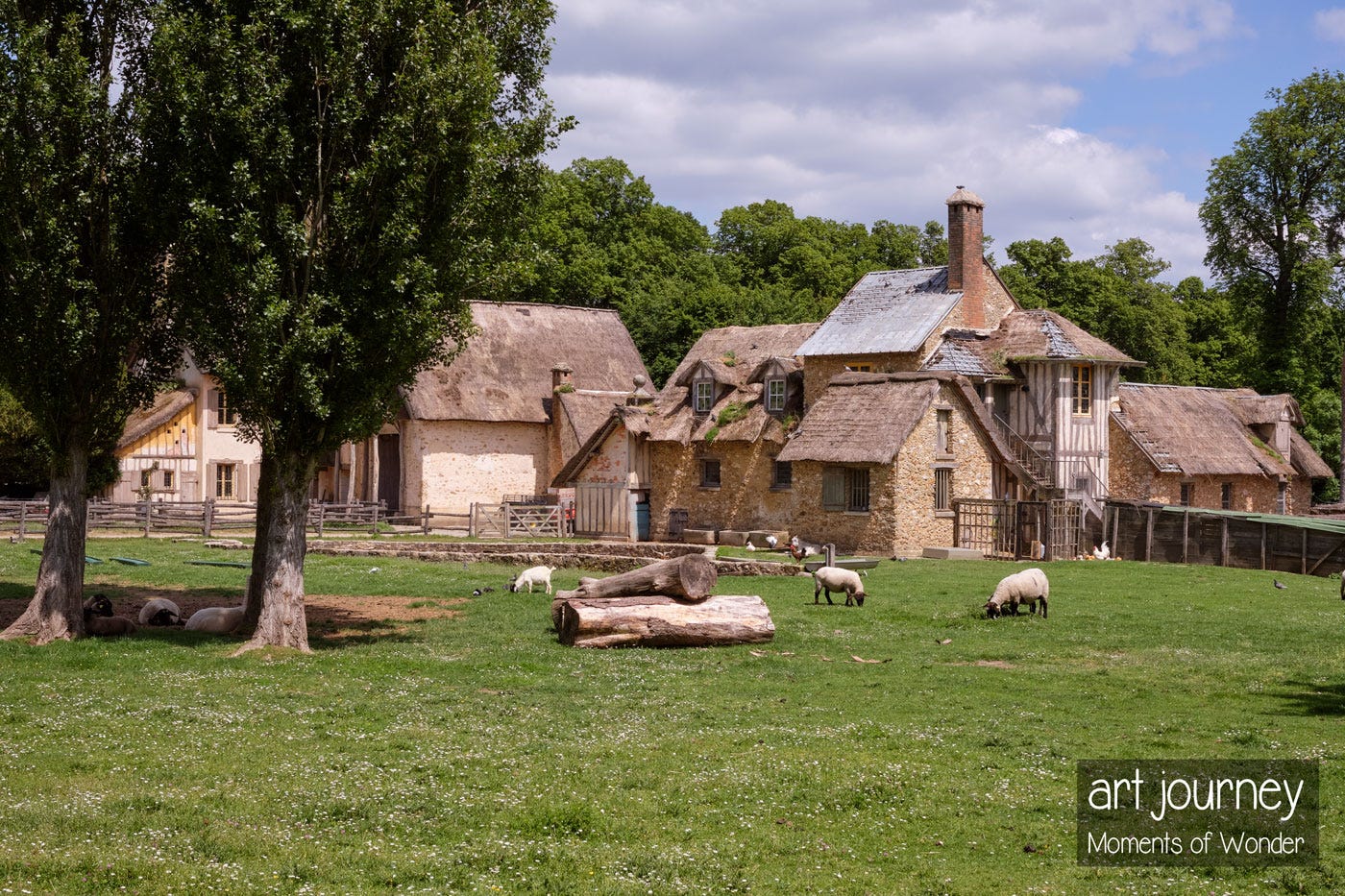Bucolic charm at Marie-Antoinette's village in Versailles
When Marie Antoinette played in her village at the Petit Trianon.
One thing that is difficult to imagine about life at Versailles is the complete lack of intimacy for a King or Queen. Some of it is intentional, as explained in "Versailles, the wonder and the monstrous luxury.”
Notice the fence in front of the King's bed. Versailles castle was conceived as a theatre stage with one actor, Louis XIV. Up to fifty people witnessed the King get out of bed in the morning.
Don't laugh; they even paid considerable sums to be there. In an immense palace with thousands of people striving to access their master, the few who can get close are privileged. Think today as if you were a lobbyist; access is everything.
The cost to Kings and Queens was a complete lack of privacy. Since the only qualification to be King is to be born from the right father and mother, what goes on in the royal bed is a state act, closely watched.
Even Louis XIV felt the need for a more intimate place. The solution was to build a small but private castle, the Trianon, in Versailles.
The Grand Trianon, a bit of privacy in Versailles
By the end of Louis XIV's reign, the estate of Versailles reached 27,000 acres. This is not a typo; the land purchased for the park and gardens of Versailles was twice the size of Manhattan. It was so vast that it comprised two private castles for Louis XIV, only one of which survived the Revolution, the Trianon.
Trianon is nothing but the name of the village that Louis XIV purchased. In its stead, the King's architect turned into a 'small rose marble and porphyry palace with delightful gardens'.
One should think of Trianon as a predecessor to Camp David. It can be reached from Versailles castle by boat, on foot or by carriage. Louis XV gave the domain to his Queen and started to think of a secluded place to share it with his mistress nearby.
The Petit Trianon of Versailles
When you hear the word royal mistress, maybe you imagine a sugar daddy-type relationship with a cute but dumb young woman and feel sorry for the Queen.
Not so with Madame de Pompadour, Louis XV's official mistress. She was by the King's side for nearly twenty years as a very close advisor. A King's life can be lonely, and Madame de Pompadour was such a close friend that when she died, the King wept.
She owed her position to her beautiful mind, as she was an intellectual with an art style named after her. Following her advice, Louis XV commissioned a castle in the Trianon grounds, the Petit Trianon. From the start, its architecture was designed to foster intimacy.
The main castle is adorned with military trophies, its ceilings with victories. The Petit Trianon is a country house and a leisure residence decorated with nymphs and flowers. And as luck had it, one of the first things Louis XVI said to his bride was:
You love flowers, I have a bouquet to give you, the Petit Trianon.
This is how the small castle created for Louis XV's mistress evolved into Marie-Antoinette's private domain, where she could escape the constraints of court etiquette.
The weight of the etiquette on Marie-Antoinette
Étiquette sounds like a French word used in English, and for good reason, it is. Today, it refers to good manners, such as entering someone's home with muddy feet and leaving traces all over the fine Oriental carpet. Polite people will not say anything, but the impudent will never be invited again.
The etiquette at Versailles was a far more stringent affair, with its ultimate goal being submission. Even between nobles, there were many layers of rank and privileges between them, and one crossed them at his peril.
During Louis XIV's time, only the King ate at lunchtime. Everyone else stood, looking at one man eating, as if it were the savannah when the lion king feasted. His brother had the privilege of asking for a stool, not a chair, a stool. Second in line to the throne, he was made to watch his brother eat.
Another example is to watch 'Marie-Antoinette' by Sofia Coppola. Underneath the stylish exterior, there is substance and truth. In one scene, it is winter, and young Marie-Antoinette is naked and shivering, waiting for someone to hand her a shirt.
But the ladies argue about rank, bickering about which one is entitled to bring the shirt. No one pays attention to the trembling young lady. That is what Marie-Antoinette wanted: to escape from court rules and to be in a place where she could say:
Now I am not the Queen anymore, I am me.
Return to Nature as peak fashion
We are now in the 1780s, a key moment in modern history. The Enlightenment was the pursuit of reason, science, and modern hygiene. One effect for Marie-Antoinette is that she tried to raise her children, a new idea for nobility.
The Enlightenment is one of the reasons why Louis XVI financed the American Revolution, a topic that deserves further discussion in another story.
The other is a philosophical movement advocating a Return to Nature, the myth of the 'good savage,' uncorrupted by civilization. Think of the romantic idea of discovering 'simple' natives in Tahiti, almost naked, peaceful, and happy.
That is why Marie-Antoinette had a village built in her domain. It was exotic and picturesque for nobles to have a private farm and village to decorate their estate. It was the peak of fashion.
The Hameau de la Reine Marie-Antoinette in Versailles
Look at the folkish view of a village, the pond, and the farm in the Normand style. It is not a village at all; it is a palace. Inside, it features gilded wood and marble, and outside, a thatched roof.
Yes, like a private Disney theme park, the royal architect, Richard Mique, was tasked with disguising a royal residence as a village.
Today, the Hameau has been restored, and the plaster has been painted to resemble stone. The brick walls are theatre decor, entirely illusion, with painted cracks to make them look old.
When the Queen played a milkmaid and the King a miller
Marie-Antoinette had her private theatre. Do realize, for one minute, the reputation of actresses at the time and how scandalous it was for a Queen to be on stage. One of the plays was inspired by the tale of The Milkmaid and the Milk Pot.
Imagine Marie-Antoinette, on stage, dressed as a milkmaid, uttering:
Here, here, the little milkmaid, who wants to buy her milk?
One of Marie Antoinette's first parties, organized in her domain, involved creating a mock fair. In it, the Queen held a stand selling lemonade. Once the hamlet was built, costumed parties could last days.
In one, Louis XVI dressed as a miller, Marie Antoinette as a peasant, and the King's brother as a schoolteacher.
A witness described:
The pleasure of roaming about the little village, to see the cows being milked and to fish in the lake, enchanted the Queen.
The entertainment involved watching a peasant woman bringing cows to the pond and others washing clothes.
At the time, the wind of change was blowing from America—the ideas behind the American and French Revolutions being intertwined—it probably was not a great idea to be perceived as wasting money pretending to be poor.
A costly make-believe world
Some insist it is blown out of proportion, a few days among years of policy. It may be, but perception, then as today, matters. Playing in the hamlet was a daydream, being inside a triple-layer bubble, removed from the realities of the kingdom.
The first layer was to live inside Versailles castle, the second to take shelter from court life at the Petit Trianon, and the third to play make-believe, folky life, at the taxpayer’s expense, during financial difficulties.
As it was a private domain, gossip and slander flourished. Perception matters, fair or not. As explained in the story of the Diamond Necklace affair, Marie-Antoinette never said, "Let them eat cake." But that lie keeps being repeated.
At her trial, the accusation did mention the supposedly huge sums spent at the Petit Trianon. To which Marie-Antoinette responded:
It is possible that the Petit-Trianon did cost huge sums, probably more than I would have liked, we got carried away, little by little, into spending.
In the big scheme of things, Trianon was a drop in the bucket, and it's not like previous Queens were thrifty. However, being perceived as "Madam Deficit" at a time when French players in the American Revolution had returned home proved fatal.
The Hameau de la Reine, a folky daydream and Versailles' wonder
Dear reader, as we discovered with "Versailles, the wonder and the monstrous luxury," spending money on monuments, even for the wrong reasons, can be a long-term investment. The Hameau de la Reine was never meant to stand for centuries, and Napoléon had already had to restore it in the 1810s.
In 1927, John D. Rockefeller Jr. donated $27 million—$500 million today—toward the restoration of Versailles and the Hameau. Thanks to Dior, the Maison de la Reine was recently restored.
Whether it is the Notre Dame cathedral or Versailles, the only way for temples, castles, or churches to survive the assaults of time and man is to invest in permanent maintenance.
The benefits are proven—that would be a great future story—but here, at the Hameau de la Reine, we get to share Marie-Antoinette's dream, wise or not.
Visitors' expectations when spending a day visiting Versailles are to be dazzled by marble and gold, not to have to walk miles, and to see happy pigs in a picturesque and immensely charming village.
I hope you will trust me, dear reader, when I tell you that the Hameau never fails to enchant visitors. This is why I hope it will bring you a Moment of Wonder.
Sources
Elizabeth Reynaud, le Petit Trianon et Marie Antoinette.
Histoire de Marie-Antoinette; par Edmond et Jules de Goncourt - 1858.
https://en.chateauversailles.fr/discover/history/great-characters/john-rockefeller-jr
https://artjourneyparis.com/versailles-palace-private-tour.html








